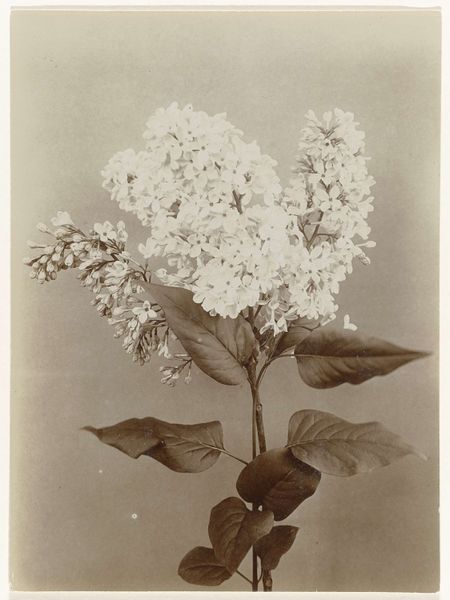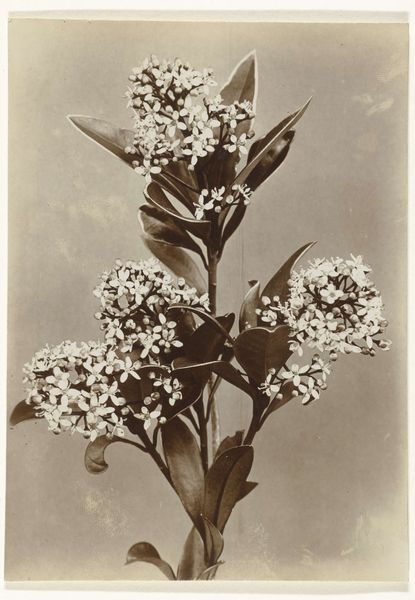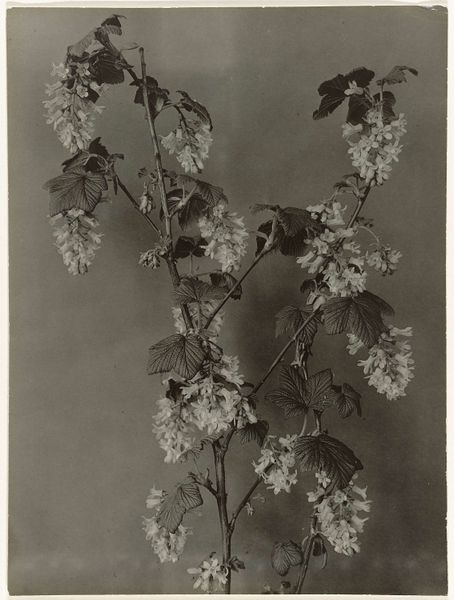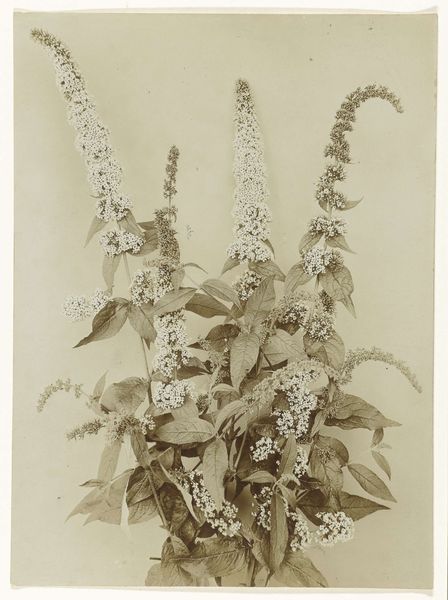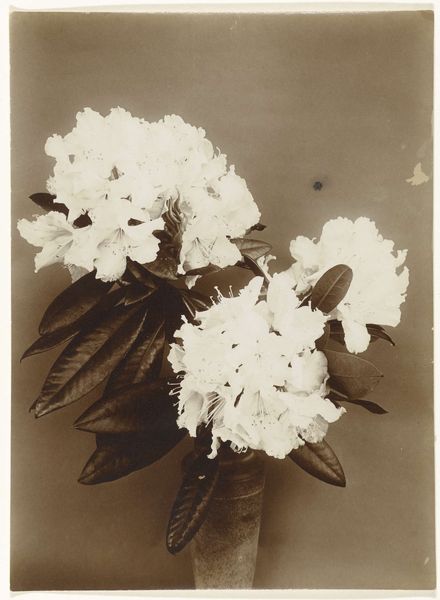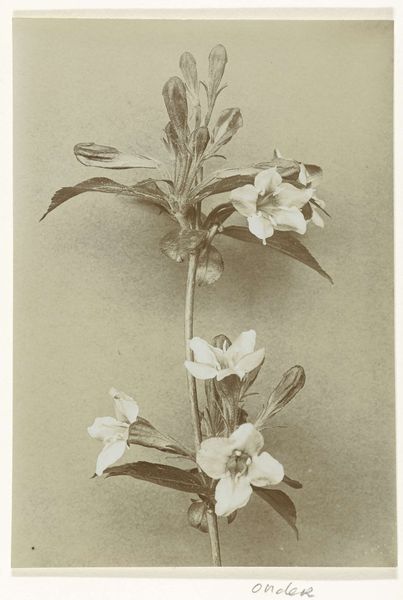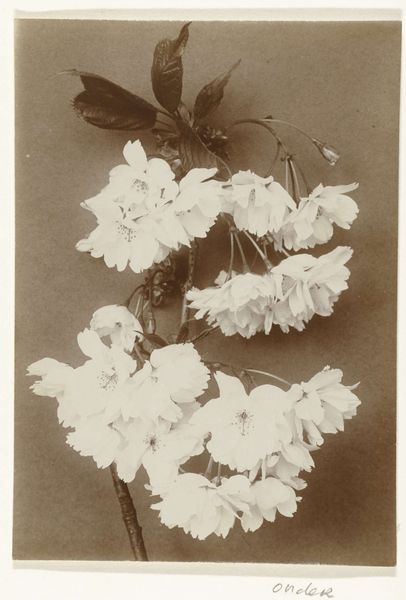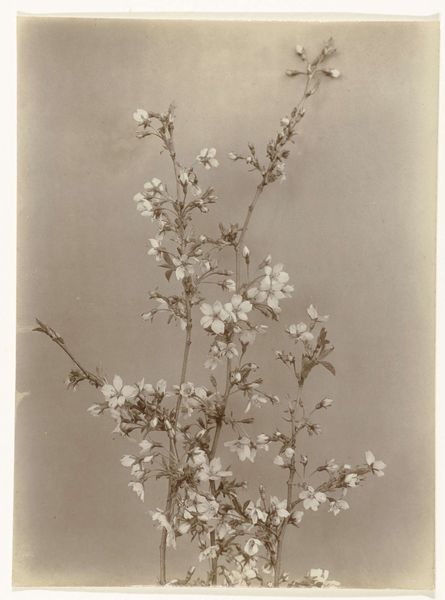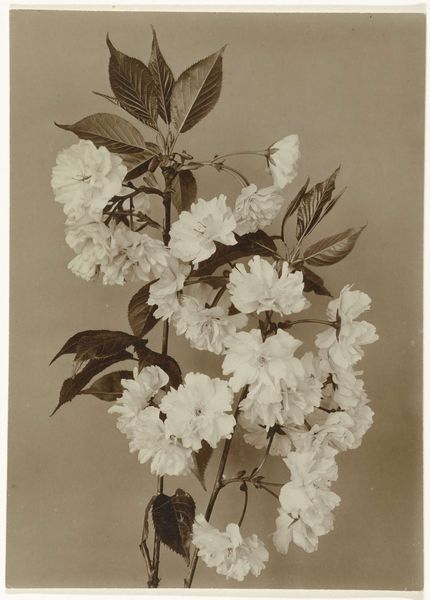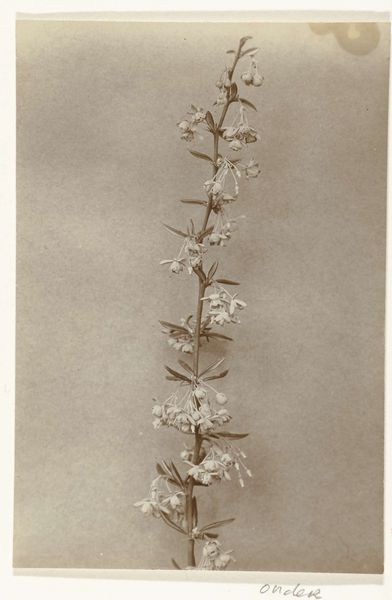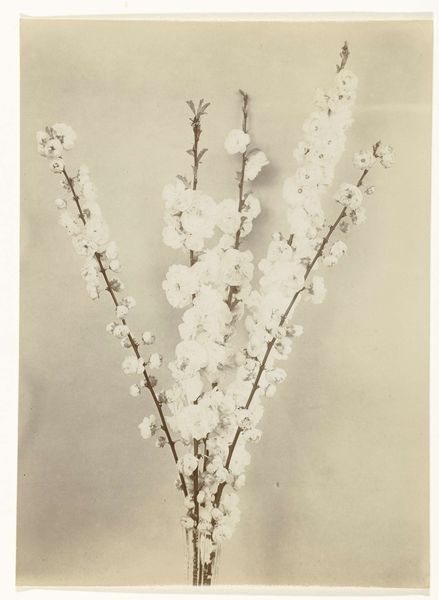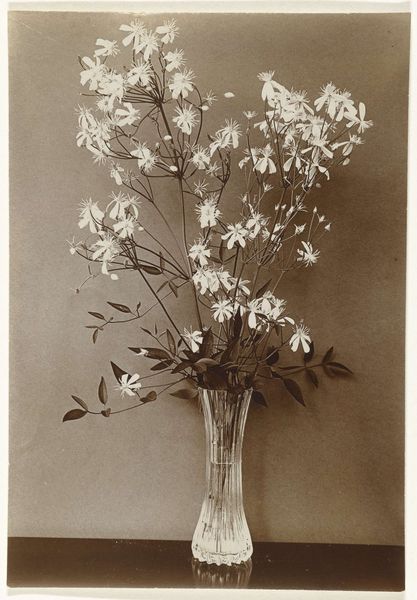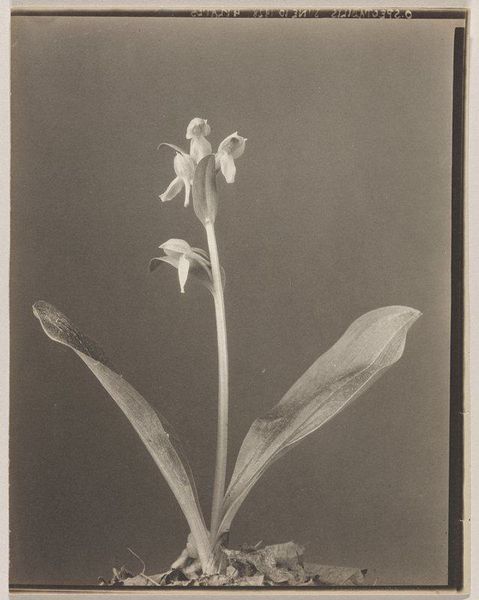
print, photography
#
pictorialism
# print
#
photography
#
floral photography
#
botanical photography
#
flower photography
Dimensions: height 224 mm, width 165 mm
Copyright: Rijks Museum: Open Domain
Curator: This is a photographic print of blooming lilacs, titled "Bloeiende seringen tegen egale achtergrond," created by Richard Tepe sometime between 1900 and 1940. It resides here at the Rijksmuseum. Editor: It's striking how muted it is, almost ghostly. The soft focus gives it a dreamy, romantic quality, wouldn’t you say? It reminds me of early photographic processes, so delicate and labor-intensive. Curator: Precisely. Tepe worked within the Pictorialism movement, where photography sought to emulate painting, achieving artistic effects through manipulation of the printing process. These artists positioned photography firmly within fine art discourse. Editor: It's intriguing to consider the materials involved. Beyond the camera and lens, there are specific papers, chemicals for development. This was not merely capturing reality; it was a deliberate construction using tangible elements. Each print would carry its own subtle variations based on the craftsperson's hand. Curator: Indeed. The aesthetic choices elevate it beyond a mere botanical study. Notice the soft lighting, the limited depth of field. These are conscious decisions to evoke emotion and create atmosphere, pushing back against the documentary function that was typically associated with photography at that time. This also raises interesting questions about who photography was for during this era and how prints of flora served as decorative or sentimental objects in the home. Editor: I wonder, what sort of labor went into it? Where were these flowers sourced? Was it from a garden maintained by specific people, perhaps reflecting social hierarchies through controlled landscapes? It’s easy to overlook these labor relations when simply viewing a beautiful flower. The artistic merit becomes deeply entwined with how class is represented through imagery and social practice. Curator: Absolutely. And considering the widespread adoption of photography throughout Europe at the time, these sorts of images shaped broader cultural perceptions of nature and beauty. As they circulated, especially as decorative items for the middle class, they propagated idealized representations that could sometimes erase or ignore the very real labor behind cultivation and presentation. Editor: That interaction of class, labor and the materiality of photography, gives new significance to what seems at first an innocent study of nature. Curator: Precisely. It reveals layers of meaning concerning artistic intention, social context, and the very fabric of its making.
Comments
No comments
Be the first to comment and join the conversation on the ultimate creative platform.
